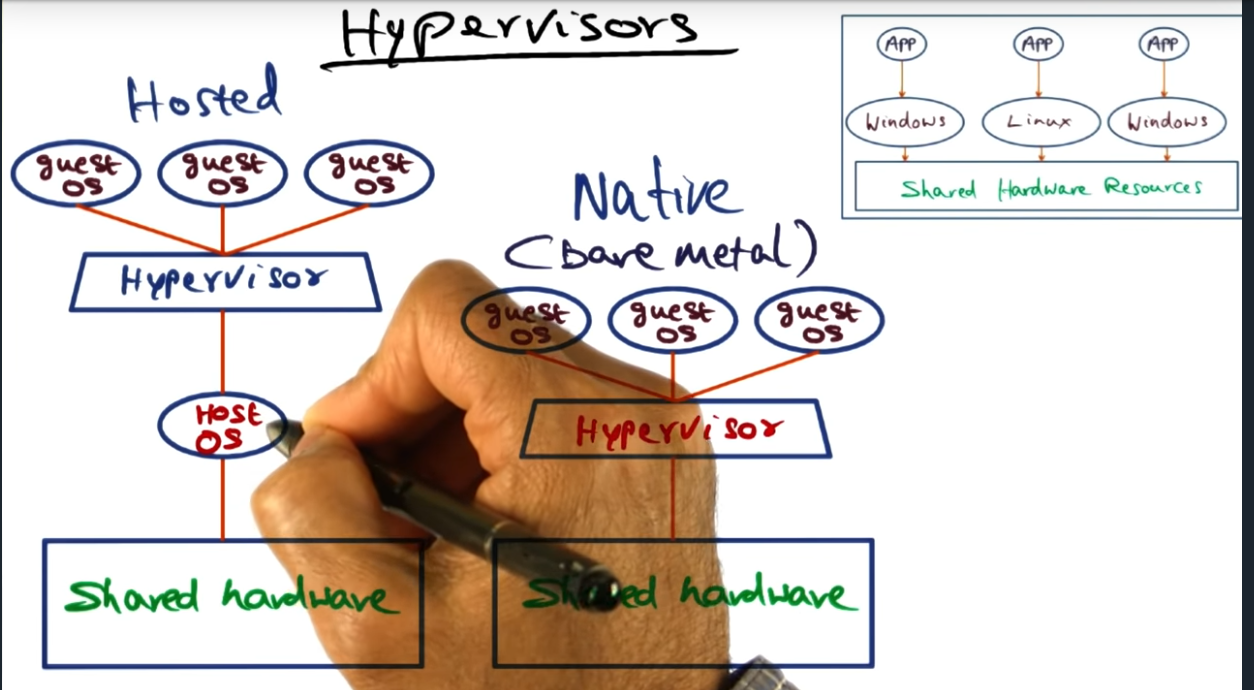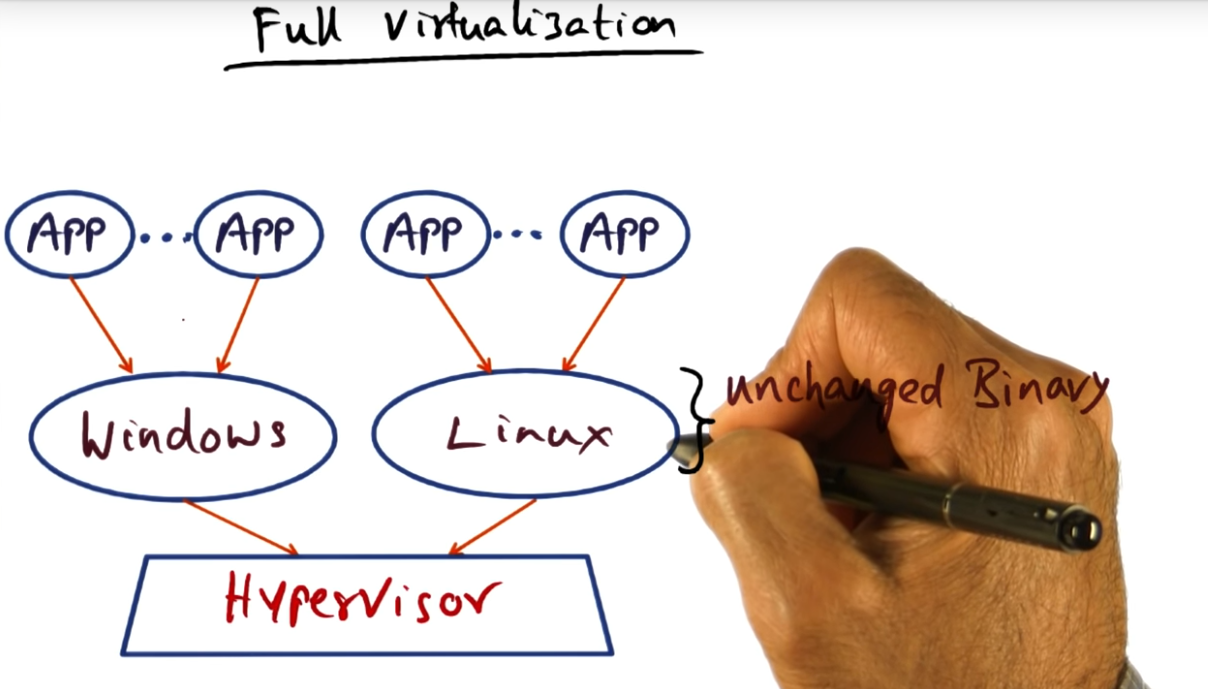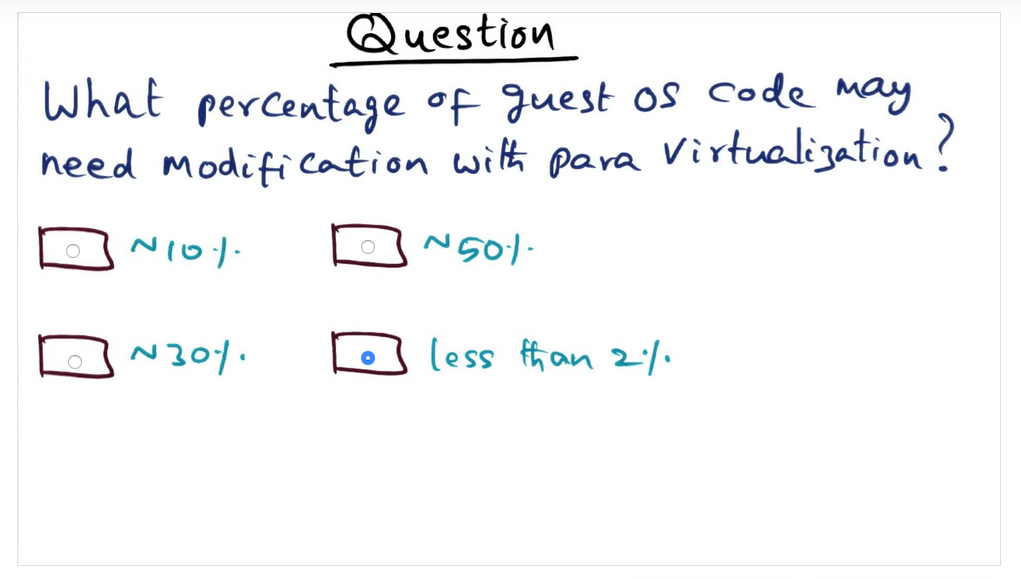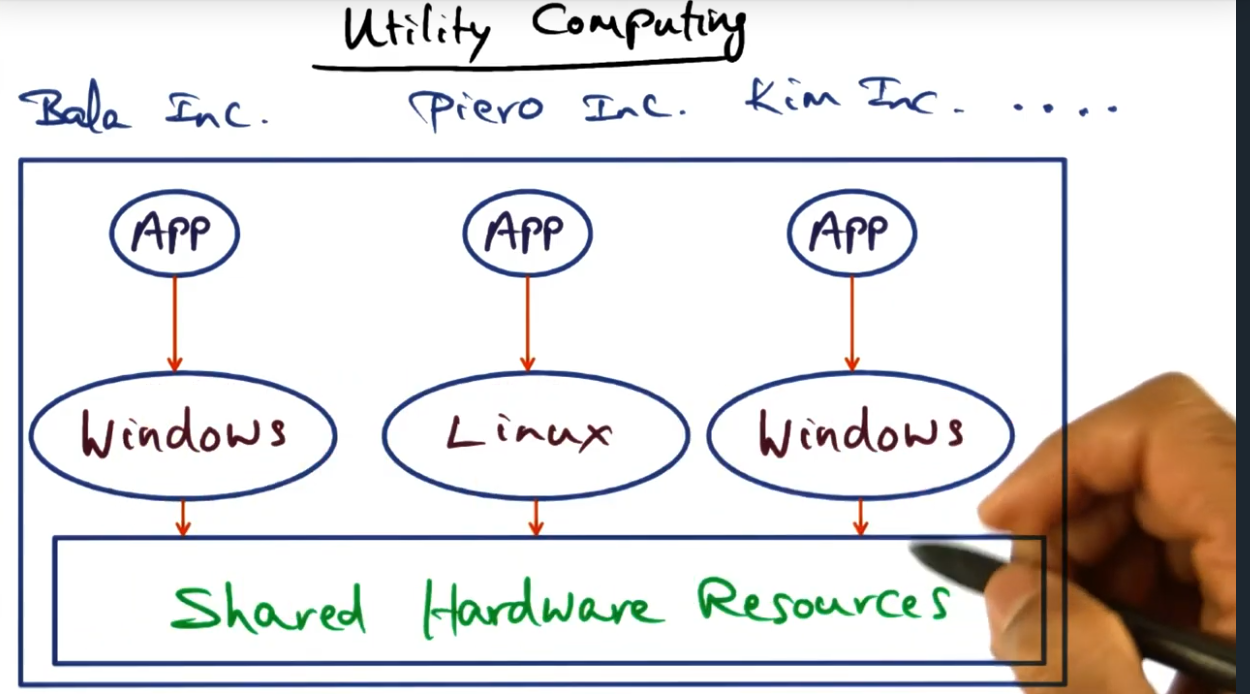As system designers, our goal is to design a “black box” system that create an illusion that our users have full and independent access to the underlying hardware of the system. This is merely an abstraction since we are building multi-tenant systems with many applications and many virtual guest machines running on a single piece of hardware, all at the same time.
To this end, we build what is called a “hypervisor” (code that runs directly on the physical hardware), the software supporting multiple guest machines that run on of it. The guest operating system either be virtualized guest operating system (that has no clue it’s a virtual guest and so that underlying OS binary is the same as it is if you were to install it on a physical server) or be para virtualized operating system (that is aware of the fact that it is virtualized, similar to how the “hosts” in Westworld gain awareness that they are in fact robots)
Quiz: Virtualization
Summary
the concept of virtualization is prolific. We see it in the 60s and 70s when IBM invented the VM/370. We also see it in cloud computing and modern data centers.
Platform virtualization
Summary
As aspiring operating system designers, we want to be able to build the “black box” in which the applications ride on top of, the black box being an illusion of an entire independent hardware system, when really it is not.
Utility Company
Summary
End users resource usage is bursty and we want to amortize the cost of the shared hardware resources. End users have access to large available resources
Hypervisors

Summary
Inside the black box, there are two types: native and hosted. Native is bare metal, the hypervisors running directly on the hardware. Hosted, on the other hand, runs as a user application on the Host operating system
Connecting the dots
Summary
Concepts of virtualization date back as far as the 70s, when IBM first invented it with IBM VM 370. Fast following was microkernels, extensibility of OS and SIMOS (late (0s, and then most recently, Xen + VMware (in the 2000s). Now we are looking at virtualizing the data center.
Full Virtualization

Summary
With full virtualization, the underlying OS binaries are untouched, no changes required of the OS code itself. To make this work, hypervisor needs to employ some strategies for some system calls that silently fail
Para Virtualization
Summary
Paravirtualization can directly address some of the issues (like silently failing calls) that happens with full virtualization. But OS needs to be modified ; at the same time, can take advantage of optimizations like page coloring.
Quiz: What percentage of guest OS code may need modification

Summary
Less than 2% of code needs modification to support paravirtualization, very minuscule (proof of construction, using Xen)
Para Virtualization (continued)
Summary
With paravirtualization, not many code changes are needed and almost sounds like a no brainer (to me)
